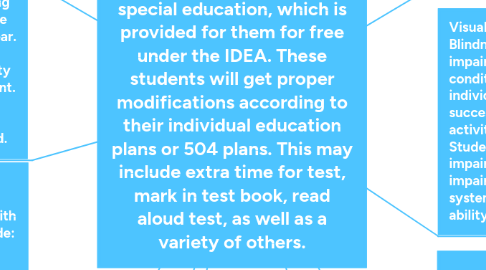Low-Incidence Disabilities LID Students with LIDs need special education, which is provided for them for free under the IDEA. These students will get proper modifications according to their individual education plans or 504 plans. This may include extra time for test, mark in test book, read aloud test, as well as a variety of others.
by Michael Sorrentino


